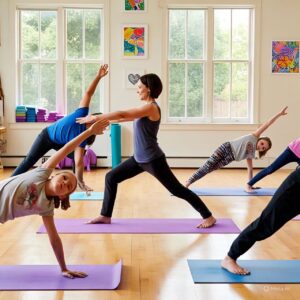Why Is Yoga Entering Classrooms Worldwide?

Yoga is no longer just an ancient Indian wellness tradition—it has become a global educational movement. Faced with rising stress, screen dependence, and reduced physical activity, schools across the world are introducing yoga in their curriculum to promote holistic student development.
This shift is about more than just poses. It’s about giving children the tools to:
-
Build emotional resilience
-
Enhance academic focus
-
Foster lifelong healthy habits
Why Schools Need Yoga Today
Modern education is evolving to address more than academic excellence. With growing concerns like:
-
Academic burnout
-
Anxiety and depression among students
-
Poor posture and inactivity
-
Disruptive behavior in class
Key Benefits of Yoga for Students
✅ 1. Improves Focus & Memory
Breathing exercises and gentle movement help sharpen concentration and reduce mental fog—making it easier to absorb and retain new information.
✅ 2. Reduces Stress & Anxiety
Yoga lowers cortisol levels and activates the body’s relaxation response, making students calmer before tests or public speaking.
✅ 3. Boosts Physical Fitness
Yoga enhances posture, flexibility, core strength, and balance—perfect for counteracting long screen hours and sedentary habits.
✅ 4. Promotes Emotional Intelligence
Regular practice helps students become more aware of their emotions, aiding better self-control and empathy.
✅ 5. Enhances Classroom Behavior
Teachers report fewer disruptions, increased peer cooperation, and stronger student-teacher connections when yoga is integrated.
